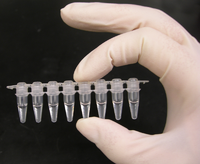
Photo from wikipedia
We presented a novel method, referred to as self-priming hairpin-utilized isothermal amplification (SPHIA), to enable nucleic acid detection. The hairpin probe (HP1) employed in this strategy was designed to be… Click to show full abstract
We presented a novel method, referred to as self-priming hairpin-utilized isothermal amplification (SPHIA), to enable nucleic acid detection. The hairpin probe (HP1) employed in this strategy was designed to be opened through binding to the target nucleic acid. Upon opening of HP1, the self-priming domain within the HP1 stem region was exposed and rearranged to serve as a primer. The following extension displaced the bound target nucleic acid, which was then recycled to open another HP1. The extended HP1 was subjected to continuously repeated extension and nicking reaction and abundant triggers were produced as a result. The triggers entered and initiated phase 2 reaction through binding to HP2, and this produced numerous target mimic strands (Target'). The target' entered and activated the phase 1 reaction, mimicking the target nucleic acid. As a consequence of these interconnected two amplification reactions initiated by a positive feedback mechanism, a considerable number of final double-stranded DNA products (FPs) were ultimately produced, which could be monitored in real-time through duplex-specific fluorescent signaling. Exploiting this novel design principle, we detected target DNA down to 28.9 aM with outstanding discrimination capability. The practical diagnostic ability of this strategy was also successfully demonstrated for target RNA detection by rationally redesigning the hairpin probes.
Journal Title: Analytical chemistry
Year Published: 2020
Link to full text (if available)
Share on Social Media: Sign Up to like & get
recommendations!